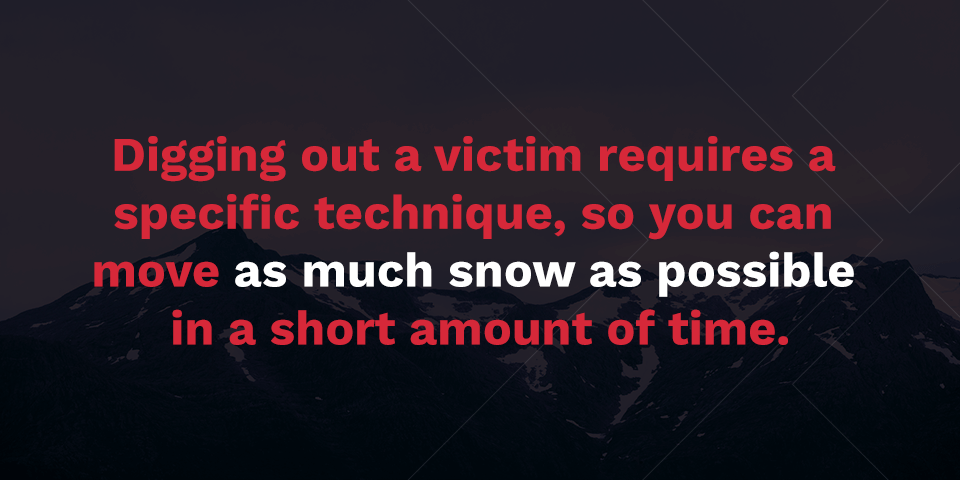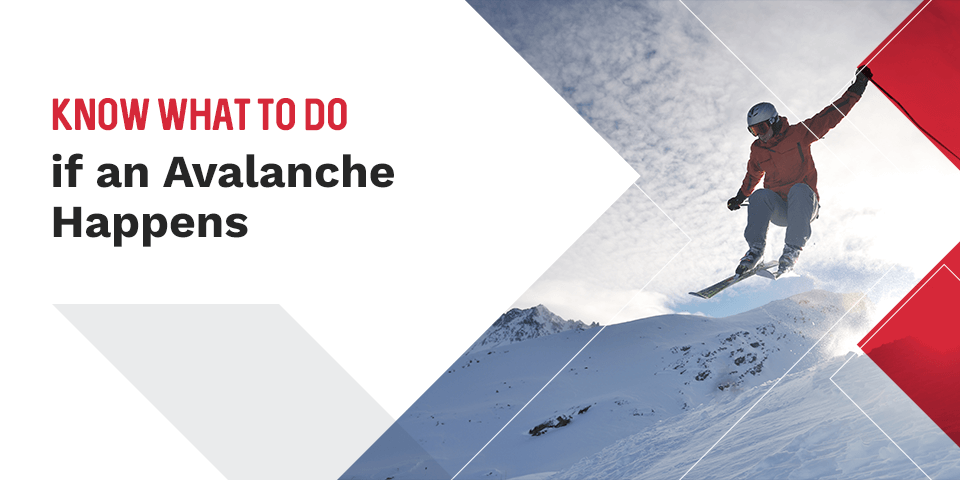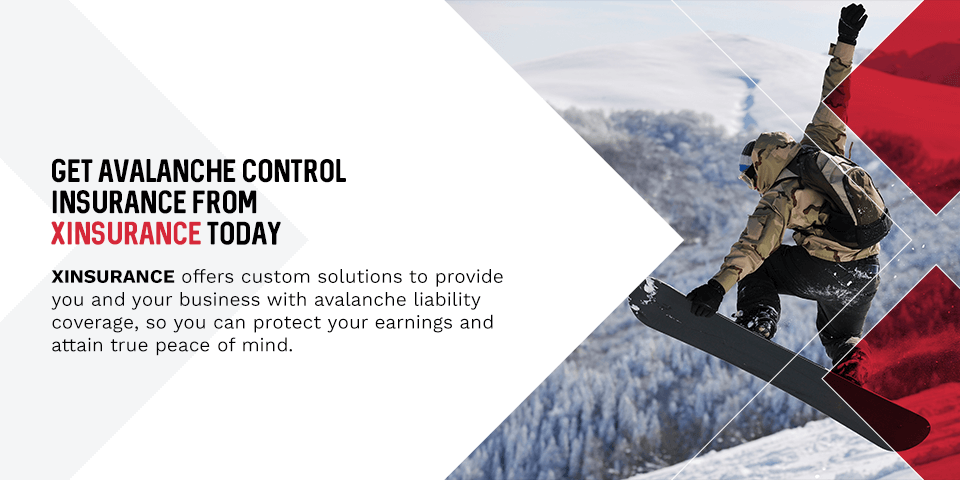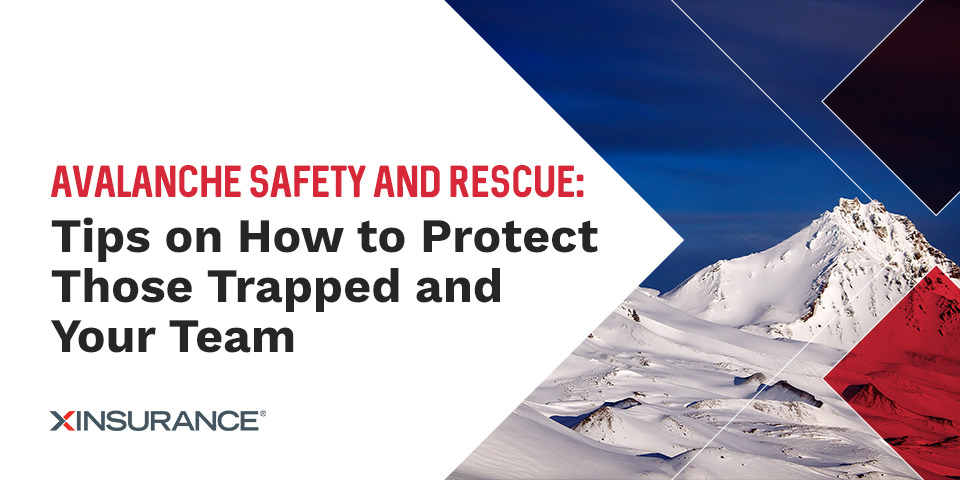
Avalanche Safety and Rescue: Tips on How to Protect Those Trapped and Your Team
Protecting yourself and your team when skiing in the backcountry should be a top priority for everyone involved. Informing yourself and getting proper instruction on avalanche safety and rescue helps to ensure your trip is safe and successful. Keep our tips for backcountry and avalanche safety in mind next time you get out on the snow.
6 Tips on Avalanche Safety and Rescue
Avalanche safety is crucial for anyone heading out to the backcountry. Whether you’re a group leader or a beginner when it comes to backcountry knowledge, keep these six tips for safety and rescue in mind when you’re out on the slopes.
1. Review the Weather Forecast Before Heading Out
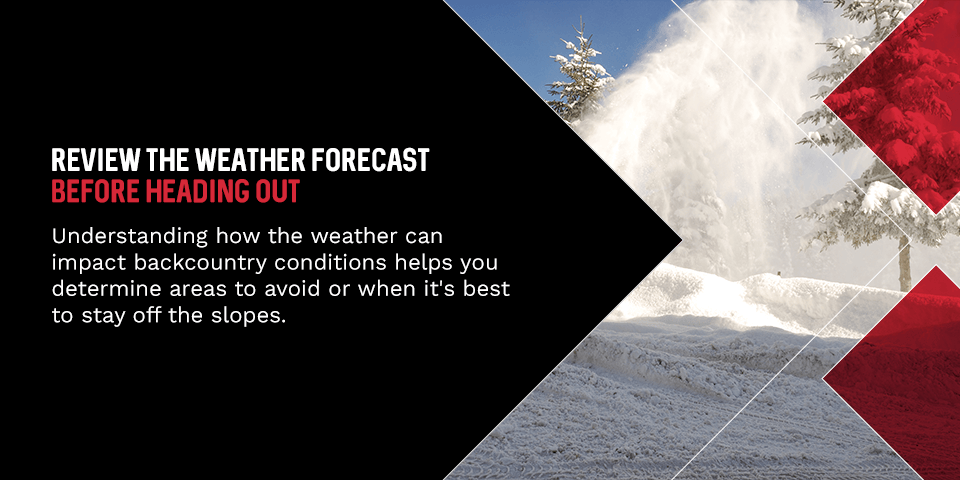
- Heavy snow or rainfall: While you should never be out on the slopes during a big storm, be mindful of the risks a day or two after a big storm. Heavy snowfall or rain after a storm can overload an area of snow, making it unstable and triggering an avalanche. Just because the weather after a storm seems fair, there are still significant risks.
- Wind loading: Wind is often a common factor in avalanches because it can create dangerous situations in a short period of time. The wind blows snow around, piling it up on the edges of slopes. When wind-blown snow overloads leeward slopes, the weight of the snow can be enough to cause an avalanche.
- Warming temperatures: Warming weather can create some serious avalanche hazards. When temperatures stay above freezing for several days in a row, the snow will melt, causing significant amounts of moving water to create unstable conditions under the surface of the snow. This can trigger wet avalanches, which are quite dangerous. Wet snow avalanches are more common during the spring season, so avoid the warmest times of the day.
Because weather can have a big impact on avalanche risk, it’s critical to check the weather in the area you’ll be heading out to. Do your research on the specific route you’ll be taking and the snow conditions in those areas. Local avalanche centers post updated forecasts and avalanche warnings, so be as informed as possible. If necessary, adjust your route or plan to avoid risky conditions.
2. Carry the Proper Equipment for Backcountry
Aside from all your usual equipment for backcountry activities like snowboarding, skiing or snowshoeing, there are three crucial pieces of equipment you’ll want to carry in case of an avalanche — a beacon, probes and a shovel. Here’s a closer look at why these pieces of equipment are so important to have:
- Beacon: Beacons, or transceivers, allow you to search for or be searched for if an avalanche buries you or a member of your group. When you head out into the backcountry, everyone in your group should set their beacon to “transmit,” so it sends signals the entire time you’re out. In the event someone gets caught in a slide, everyone will turn their beacon to the search mode to receive signals from the victim’s beacon. This enables you to pinpoint the victim more efficiently.
- Probes: Probe poles are thin, light, collapsable poles you can use to mark locations in the snow and probe under the surface for your buried team member. Probes are typically between six and eight feet long, allowing you to probe around far below the surface. Practicing with your probes is essential to help you determine the difference between what the ground, rocks or the victim’s leg or boot feels like. Since you won’t be able to see and have to work quickly, recognizing these feelings is important.
- Shovel: Carrying a collapsable shovel enables you to dig out buried victims. Though time-consuming and often straining, shoveling is quickly is crucial, as time is limited to ensure a safe rescue. Knowing strategic shoveling techniques can help you uncover victims quickly and safely.
Having the proper equipment ensures you’re prepared for the worst. However, knowing how to use these tools properly can make the difference between life and death. Be sure to practice using your tools and equipment, so you know what you’re doing in an emergent situation.
3. Get Training on Avalanche Rescue Techniques
One of the best ways to prepare for the risk of avalanches is to take training courses and learn rescue techniques. Avalanche safety courses can be extremely helpful, especially if you’re new to the backcountry. Local guide services offer courses that focus on snow science, how to look for avalanche clues and learning how to use your rescue gear properly. Here are some valuable rescue techniques commonly taught in avalanche courses:
- Search patterns: When searching for a buried victim, enter the slide debris from the side or bottom of the slide. Then, you and your group members should walk in straight lines across or down the slope, each person about 100 feet apart. This allows you to cover significant ground and search methodically instead of randomly poking around in the snow, potentially missing the victim’s location.
- How to pinpoint victims: Once you’ve used your beacon to get within close proximity of the buried victim, you’ll use your probing poles to pinpoint the victim. Starting at the marker of the closest signal, begin striking the snow perpendicular to the ground in a spiral pattern. Each strike should only be a few inches from the previous one and the arms of the spiral should be only a few inches apart to ensure you’re not missing anything. When the probe makes contact with your buried group member, leave it in place, so you know where they are.
- How to dig out a victim: Digging out a victim requires a specific technique, so you can move as much snow as possible in a short amount of time. After pinpointing the victim, take a couple of steps downhill and start digging a downward slope towards the end of your probe and the victim. The benefit of this maneuver is that it helps avoid a hole from caving back in and makes it easier to get the victim out of the snow. Be sure to throw snow far behind or to either side of you, so it doesn’t fall back in.
If you take an avalanche course, practice the techniques they taught you and use them when the time comes.
4. Check the Terrain to Assess Avalanche Risk
There is specific backcountry terrain more susceptible to avalanches than others. These areas are called avalanche terrain and include anywhere an avalanche may start, run or stop. Learn what terrain can be risky, so you can check the terrain of your route either before you head out or while you’re on the slopes. Here are some telltale signs of avalanche terrain:
- Steep slopes: Steep slopes are prime territory for avalanches to slide. If the slope is steeper than 30 degrees, there is a risk for avalanches. Avalanches are most common on slopes ranging from 35-50 degrees. Any slope less than that has little to no risk of starting an avalanche, though avalanches can run through or stop on less steep slopes.
- Terrain traps: Terrain traps are features in the landscape that can amplify the consequences of an avalanche. For example, rocks, trees, gullies, cliffs and crevasses can make small avalanches worse if the victim is thrown against objects or buried in a gully. This can make rescue significantly more challenging and potentially cause more severe injuries for the victim.
- Trigger points: Trigger points are areas where avalanches are most likely to be triggered and begin. Wind-blown snow, slopes that get steeper mid-way down, rock outcrops and shallow areas of snow all tend to be avalanche trigger points. Snow slides can also be triggered at ridges, and remember that careless group members can also be the cause of triggered avalanches.
- Connected slopes: As we said above, avalanches are less common on slopes that have low angles, so you’ll generally be safer in those areas. However, you should be aware of where steep slopes connect with low-angled slopes. These areas can be risky as avalanches in steep areas slide down to or through the low-angled slopes.
Staying aware of the terrain you’re passing through or the terrain surrounding you can help you determine whether you may be in a risky area. It’s best to avoid these areas, especially if you’re out alone. If you must pass through avalanche terrain, do so with extreme caution. Professional backcountry guides are often best to rely on when exploring new slopes.
If you’re trekking into backcountry terrain, do so with a group of people. If you’re heading out alone, stay on familiar paths and always let a friend know where you’ll be and when to expect you back, so they can notify authorities if you haven’t returned.
5. Know What To Do if an Avalanche Happens
When avalanches occur, the event happens quickly. It’s essential to be prepared, so you can act quickly and take the necessary steps to either save your life or another person’s life. If you’re caught in an avalanche:
- Fight to get to the surface or try to exit to the side of the avalanche.
- As you stop moving, create an air pocket in front of your face, so you can breathe until your group finds you.
- If you’re able to move, attempt digging yourself out.
- Most importantly, stay calm.
If a member of your group is caught in an avalanche, know how to handle the situation, so you can take quick action. Start doing these steps right away:
- Assess the risk. Stop for a minute to assess the risk of another snow slide. An avalanche can trigger more avalanches and any remaining members of your group will be no help if they get caught in another slide.
- Put someone in charge. Immediately put a group member in charge. It’s best to put the person with the most avalanche experience in charge, as this will help prevent others from getting lost or hurt and help the group locate those missing quickly. The person in charge should be able to direct the best use of resources with the big picture in mind.
- Account for everyone. Next, it’s crucial to get a headcount of remaining group members to determine who’s missing. Make note of the last location where each missing person was seen, so you know where to begin your search.
- Call for help. Before searching, remember to call for help. Include information regarding what happened, your location, the total number of people in your group and how many people are missing.
Whether it’s you or someone else caught in an avalanche, staying calm will help you react rationally and quickly. It’s best not to rely on someone else to know what to do — be knowledgeable and take action yourself.
6. Be Able to Implement Rescue Techniques
To begin your search, move to the area where the victim was last seen. Look for missing articles of clothes or equipment like gloves, hats or ski poles. Using your beacons, have each member of your avalanche rescue team search methodically until a clue is found or a signal is received. Notify others when clues or signals are found, and place the clue on top of the snow or a probe in the snow where a signal was found so others can locate the area.
As you follow the beacon signals to the covered victim, place markers or probes pointing towards the burial area once you get within several feet of the burial area. Place markers on all sides of the area to begin pinpointing the victim’s exact location. Using your probe, begin striking the snow to locate their body. Remember to leave the probe in the snow where it touches the victim. Next, work quickly and efficiently to dig out the victim, taking turns digging to move fast.
Uncover the face first, then dig out the rest of the victim’s body. Perform any immediate first aid necessary and get the victim to medical care as soon as possible.
Remember your and your group’s safety is in your hands. Simply reading an article or watching a video won’t be as valuable as instruction, practice and experience. Practice rescue techniques with your gear to be sure you can use them and implement the above techniques when in an emergent avalanche situation.
Get Avalanche Control Insurance From XINSURANCE
Avalanche accidents take more than 150 lives each year around the world, with most of these accidents being human-triggered. Nature can be seemingly random, and even the most experienced and cautious backcountry trekkers can trigger an avalanche. As backcountry tour guides and avalanche control professionals, people rely on your expertise to remain safe while on a backcountry adventure. This puts you at risk of a negligence lawsuit, whether it be a serious accident, misjudged conditions or covering a legal settlement, make sure you’re protected from damaging lawsuits.
XINSURANCE offers custom solutions to provide you and your business with avalanche liability coverage, so you can protect your earnings and attain true peace of mind. Contact us today to request a quote.

Rick J. Lindsey hails from Salt Lake City, Utah. He began working in the mailroom of his father’s Salt Lake City insurance firm, getting his introduction to the business that became his lifelong career. Rick J. Lindsey quickly rose through the ranks while working in nearly every imaginable insurance industry job. As an entrepreneur, specialty lines underwriter, claims specialist, risk manager, and a licensed surplus lines broker, Rick J. Lindsey is highly skilled in all levels of leadership and execution. As he progressed on his career path, Rick J. Lindsey discovered an urgent need for insurers willing to write policies for high-risk individuals and businesses. He was frequently frustrated that he could not provide the liability protection these entities desperately needed to safeguard their assets. He also formed the belief that insurance companies acted too quickly to settle frivolous claims. Rick J. Lindsey decided to try a different approach. He started an insurance company and became the newly formed entity’s CEO. This opportunity has enabled Rick J. Lindsey to fill a void in the market and provide a valuable service to businesses, individuals, and insurance agents who write high-risk business. XINSURANCE also specializes in helping individuals and businesses who live a lifestyle or participate in activities that make them difficult for traditional carriers to insure. If you’ve been denied, non-renewed, or canceled coverage, don’t give up quite yet. Chances are XINSURANCE can help.

